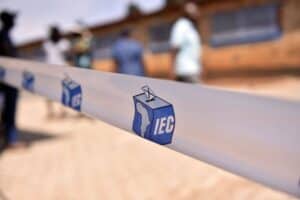Voting is a citizen's profound act. Changes in electoral process this year include introduction of second ballot.

Voting is straightforward. You register (registration is closed for the elections on 29 May), arrive at your designated polling station with your ID and place an X on a ballot paper.
It’s a citizen’s simplest but most profound act in a democracy. This year’s experience of voting in the national and provincial elections will be slightly different, though, because of changes being implemented for the first time under the Electoral Amendment Act of 2023.
ALSO READ: ‘ConCourt ruling barring Zuma from Parliament a win for civil society’ − Corruption Watch
The key innovation is the introduction of a second ballot paper for seats in the National Assembly. It means voters will be issued with three ballot papers instead of two.
The national election
The National Assembly, with 400 seats, is the lower house of parliament. The upper house is the National Council of Provinces, but its 90 seats are not filled in an election.
Instead, 10 delegates are nominated by each of the nine provinces. Members of parliament (MPs) in the National Assembly choose the president after the election.
They also initiate, debate and pass laws and they act as a watchdog over the executive branch of government, including the president and the Cabinet.
Their oversight makes sure the government is accountable to the people and adheres to the constitution.
National elections, held every five years, use a proportional representation (PR) system in which voters cast their ballots for a political party, not a specific candidate.
Parties submit lists of candidates ranked by preference and National Assembly seats are allocated proportionally based on the party’s share of the vote.
However, the key change this year is that this system applies to only half of the 400 seats (so-called compensatory seats) in the National Assembly.
The other 200 seats are regional seats (the boundaries of regions correspond to the boundaries of provinces), and voters will be able to choose from a list of parties and independent candidates.
ALSO READ: ANC is God’s organisation, says Mbalula
This is why there are two national ballot papers.
• The first ballot paper, which will be the same for every voter, will contain the name of each party, a picture of its leader, the party acronym or abbreviation and its logo.
• The second ballot paper, which will differ in each province, will list independent candidates as well as parties. The idea of allowing independents to stand for election is to ensure provincial interests are represented in national policy discussions. The PR system also applies to regional seats.
A large part of the Electoral Amendment Act outlines the complex method of allocating National Assembly seats under the new system. The Electoral Commission of South Africa has warned that having to count an extra set of ballot papers could delay the result of the election.
Provincial elections
Elections to choose new members of provincial legislatures (MPLs) are also held every five years, coinciding with the national election, and they also use the PR system.
The provincial ballot paper, different in each province, will be the third voters mark on 29 May.
Each provincial legislature is responsible for electing the premier, making laws on matters assigned to provinces by the constitution and overseeing the activities of the premier and executive council.
After the elections
In all national elections and most provincial elections since 1994, one party has received more than 50% of the votes, allowing it to form a government.
Opinion polls suggest this will not necessarily be the case this year, raising the prospect of coalition governments nationally and in some provinces.
If the party with the highest number of seats does not have an overall majority, it can form a government only by agreeing to govern collectively with a smaller party (or parties).
The largest party could be left out of government altogether if smaller parties put together a coalition representing more than 50% of voters.
The majority party, or coalition, in the National Assembly and provincial legislatures will nominate the president and premiers, and they will then appoint Cabinet ministers and members of executive councils in the provinces.
Elections are often an opportunity to introduce new talent and reshuffle old talent at executive level and any coalition negotiations are likely to focus heavily on the allocation of senior jobs.
This means there are likely to be new faces in senior rolesand that often means changes in style and emphasis. These changes will be particularly noticeable if a different party is in control.
• Moitse is Kagiso Trust’s CEO
ALSO READ: Elections 2024: investors keeping their options open






